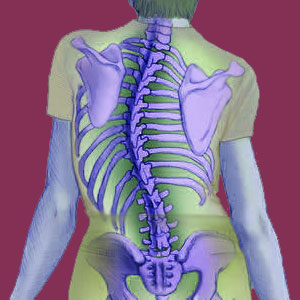
If you have scoliosis and can’t breathe, then the condition might be affecting the viability of your lung functionality. Many severe spinal curvatures can negatively impact the pulmonary system, literally compressing the lungs to the point where it is difficult for the patient to sustain themselves with life-giving air.
Breathing is a primary component of human life. It is responsible for powering the body and is crucial to so many vital processes. Suffering a reduced capacity to breathe normally will definitely have detrimental effects on the anatomy. In some cases, lung compression might even threaten life itself, becoming a potentially fatal condition that requires the most invasive forms of surgical care to resolve.
This important essay examines one of the most serious of all scoliosis consequences: impaired lung function. We will explain why scoliosis can affect the lungs and what can be done to reverse the problem. This dialog also serves as a continuation of our previous article covering scoliosis lung compression.
Scoliosis Can’t Breathe Problems
When a scoliotic curvature influences the thoracic kyphosis, a condition of hyperkyphosis often occurs, with additional rotation of some of the affected vertebrae. Between the scoliosis bringing the spine out of central alignment and moving it more towards the left or right, and with the hyperkyphosis and vertebral rotation bringing the entire spinal column forwards into the chest cavity, the effective space for the lungs is greatly reduced.
Lungs are simply inflatable anatomical sacs that require room in order to expand when filled with air. The air is then interfaced with the blood, oxygenating the blood and providing the fuel for metabolic activity throughout the body. However, just like any other container, if the space for the lugs is restricted, then they can not inflate to their full potential or virtually at all in the most significant of symptomatic presentations.
Consequences of Scoliosis Affecting the Lungs
Patients who can not breathe up to normal capacity suffer many consequences, all of which are incredibly frightening. In some instances, the actuality of the condition surpasses the patient’s worst fears, possibly endangering life itself:
In the beginning, most patients suffer reduced physical functionality when pushing their body to perform. Strenuous activity becomes more difficult and patients find themselves short of breath when reaching a certain level of pulmonary activity.
As the condition worsens, patients might be progressively more restricted in the activities they can perform with their bodies. Running might become impossible, walking uphill might become difficult and eventually even simple exertions might leave the patient short of breath.
Light-headedness is commonplace and some patients might suffer minor to severe fainting spells. This can make it dangerous to operate motor vehicles or machinery.
When the condition reaches a point where the patient is labored in breath at all times, medical science will usually intervene. At this stage of progression, the basic anatomical needs of life are barely being met and further progression of restricted lung capacity could prove fatal.
If left untreated and continually progressing, some patients will actually die due to the inability to breathe. Their bodies will simply give out due to weakness after being starved for oxygen over an extended timeframe of suffering.
Scoliosis Can’t Breathe Solutions
Most patients with severe scoliosis are under regular care of a specialist in spinal curvatures or at least have access to qualified care from a doctor or physical therapist. If a case of pulmonary compromise continues to progress, these patients will usually be recommended for surgical intervention once their symptoms become truly disruptive to a normal life. In virtually all cases, treatment will be necessitated once physical activity becomes impossible due to a lack of oxygen entering the bloodstream.
At this late stage, spinal fusion s the only therapeutic option, since this procedure can decrease the severity of the curvature and reposition the spine dorsally to increase room for the heart and lungs to function as nature intended. Typically, although filled with the potential for complications, fusion is highly successful in improving cardiovascular and pulmonary functionality when it was previous compromised by atypical spinal curvature.
For patients with minor lung compression who are not yet to the stage of requiring surgery, other interventions might prove worthwhile and effectual, including relaxation exercises, deep breathing techniques, Alexander Technique, postural correction, anatomical position evaluation, orthotic bracing and physical therapy.
Scoliosis > Consequences of Scoliosis > Scoliosis Can’t Breathe





